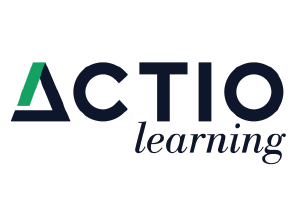Over the past year, we have spent much of our time in a reactionary state, navigating change and working feverishly to translate our in-person learning and development (L&D) initiatives into virtual programs. It has not been easy but, let’s face it, shifts happen. Fortunately, moving forward, we can create a brighter future of work. LinkedIn Learning’s 2021 Workplace Learning Report found that 66% of L&D pros globally agree that L&D will be the focal point for rebuilding and reshaping organizations coming out of the COVID-19 pandemic.
So, where does this reshaping need to happen?
With continued technological investments in virtual learning solutions and the ongoing technical training required for employees to use them, many of us have lost sight of the human connection element of training. While technology-focused training should not, and will not, go away, it’s important to teach employees more about themselves and how to connect with others to create a more human-centric workplace.
To begin creating a human-centered workplace, start by training employees on the following skills and competencies:
Self-awareness
Educating employees on the nature of their thoughts, feelings and emotions is the foundation for building a human-centric workforce. We first develop self-awareness from a young age, but it’s a skill that is often neglected and very much assumed throughout life. During a five-year research project by organizational psychologist and author Tasha Eurich, it was estimated that 95% of people believe they are self-aware. However, in reality, just 10% to 15% actually are. The bottom line is that when our self-awareness becomes blocked, workplace productivity, well-being and collaboration all suffer.
So, how do you remove self-awareness roadblocks? Begin by educating employees on how the human mind functions both consciously and unconsciously, getting back to the age-old question: Who am I? Employees must know they are not their thoughts, but they are the observer of thought impulses. Thought observation is the cornerstone of meditative practices and the gateway for employees to recognize truth from falsehood and act accordingly in the workplace.
As most of us are in denial of our own self-awareness blocks, small group workshops are an effective way for team members to help each other identify them. To be effective, it is essential to create a nurturing environment in these workshops as well as clear action plans with concrete goals to achieve higher self-awareness. The key is for each employee to focus on one area of growth and to utilize their team as an internal support system.
Empathy and Compassion
Once self-awareness has been taught, it becomes much easier for employees to learn and implement the social-emotional skills of empathy and compassion. According to Deloitte’s 2021 report on the future of learning in the wake of COVID-19, 93% of leaders believe that strengthening the emotional muscle of the workforce will help to navigate future crises more easily. Empathy is a cornerstone of creating a human-centric organization because it’s the ability to imagine the thoughts and feelings of others.
Learning the fundamentals of empathy comes with practice. Employees get so caught up in their world of workplace responsibilities that they often fail to reflect on what it’s like to be in the shoes of cross-functional team members. Creating workshops where employees can share the challenges they face with colleges provides a lens into their word, which would otherwise go unnoticed. A key component of empathy is active listening, so be sure to have members of the team probe for more information by asking questions like, “How did that make you feel?” Or, “Tell me more,” to develop empathetic skills further.
Once empathy is established, it sets the stage for team members to develop compassion while learning to take an active role in helping each other through emotional support and involvement. Empathy and compassion help foster an inclusive environment where employees are together as one and have each other’s back along the way.
Gratitude
The third principle to educate employees on is how to show appreciation and gratitude for what they have in life and for each other. It’s easy to focus on the negative, leading to high-stress levels and anxiety, which often translates to treating others poorly, inter-office gossip, and feelings of exclusion. Employees give the majority of their waking hours to help fulfill a company’s vision and mission. Learning to express gratitude is crucial for leaders and managers, but expressing appreciation is a skill the entire organization should embrace.
To help employees develop this skill, work with teams to identify moments that warrant appreciation. For instance, a personal note can mean all of the differences if an employee works long hours. One study from Harvard University and The Wharton School found that receiving a “thank you” from a supervisor boosted productivity by more than 50%. On the other hand, if a team worked hard on a new pitch and did not win the business, it’s an excellent opportunity to show appreciation to boost low morale.
During the discovery of workplace opportunities for the expression of gratitude, also ensure that you educate employees on its power for navigating our personal lives. Some of the benefits of gratitude include boosting the immune system, improved mental health, relationships and optimism. You could even create a company-branded gratitude journal to support your new initiative. Ultimately, a culture of gratitude will lead to a healthier, happier and more connected workplace.
Developing a human-centric workplace requires a shift from training technical skills to educating employees on social and emotional skills. When we do so, we create resilient organizations that become equipped to overcome challenges both big and small while celebrating each other along the way.






